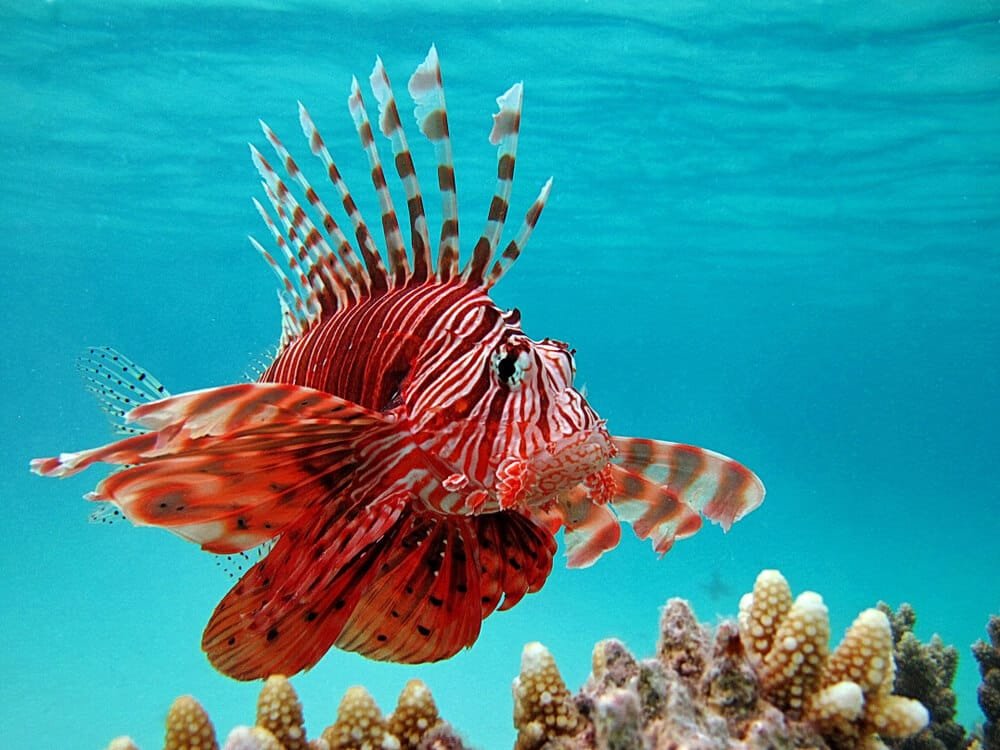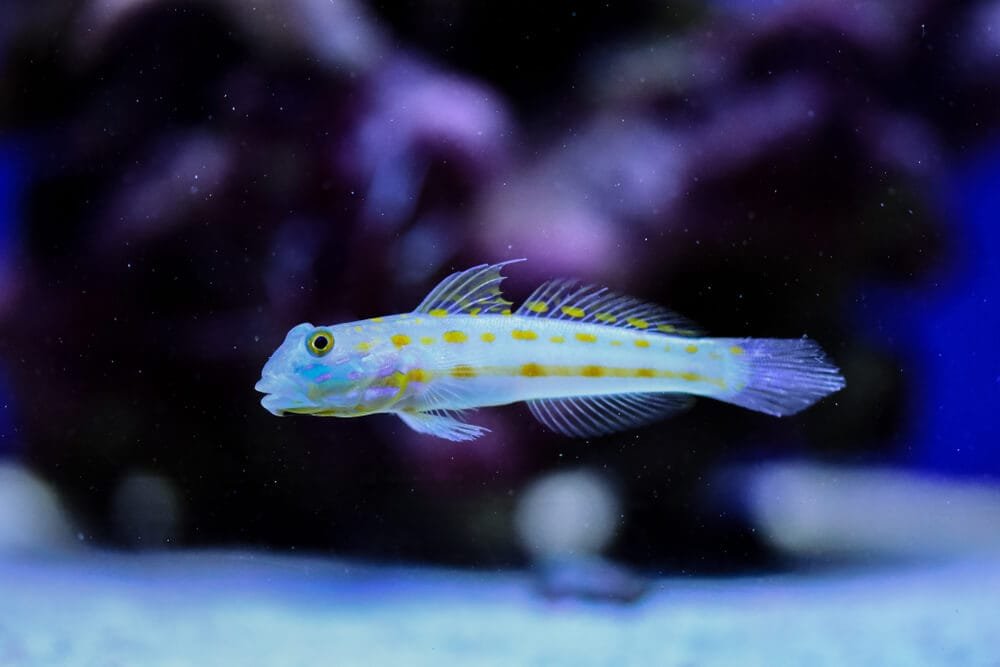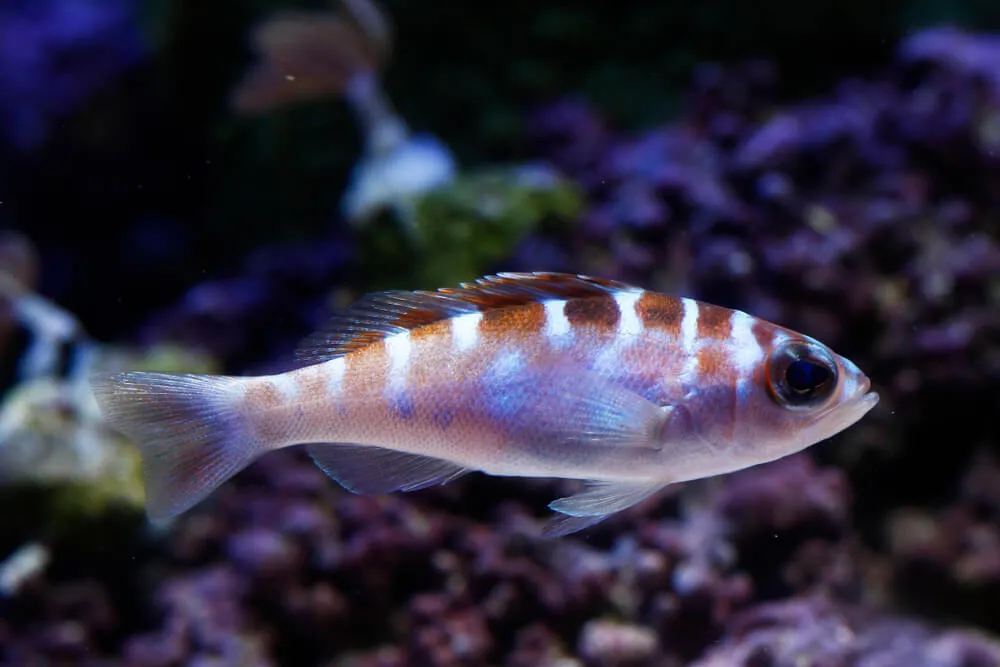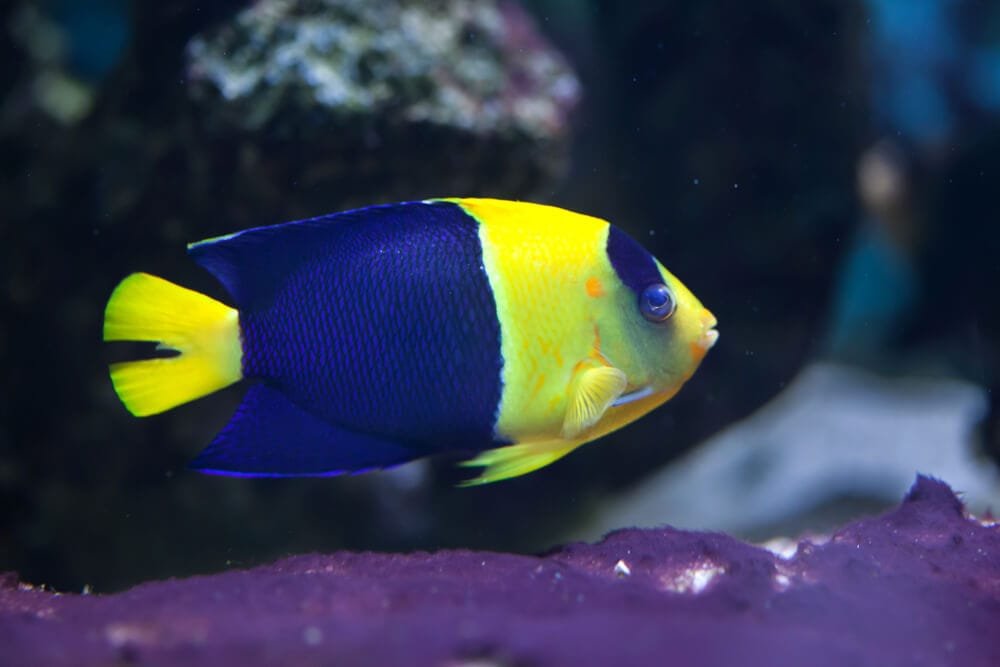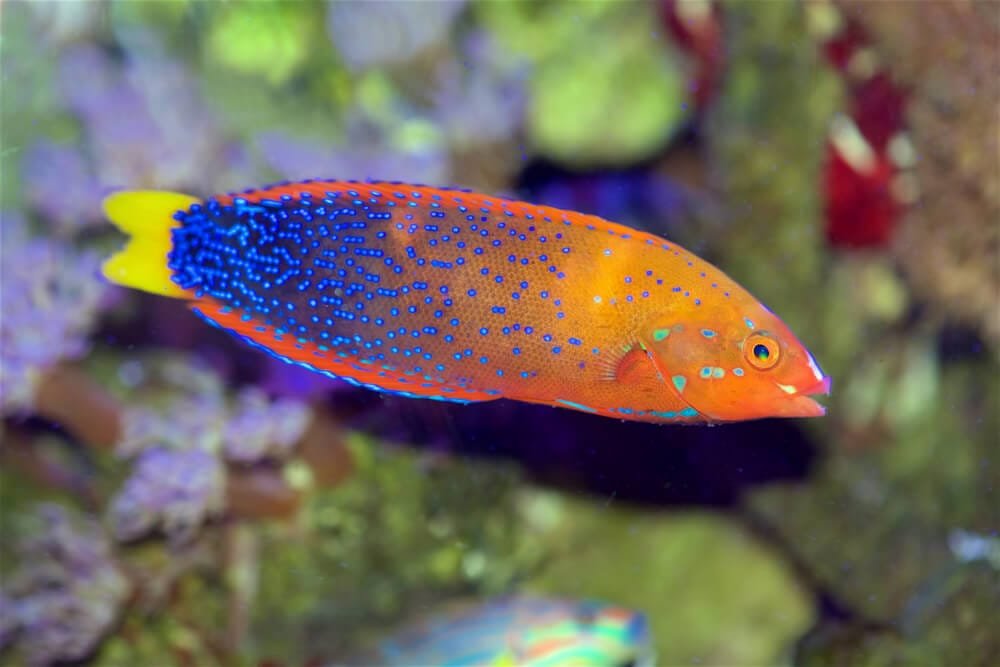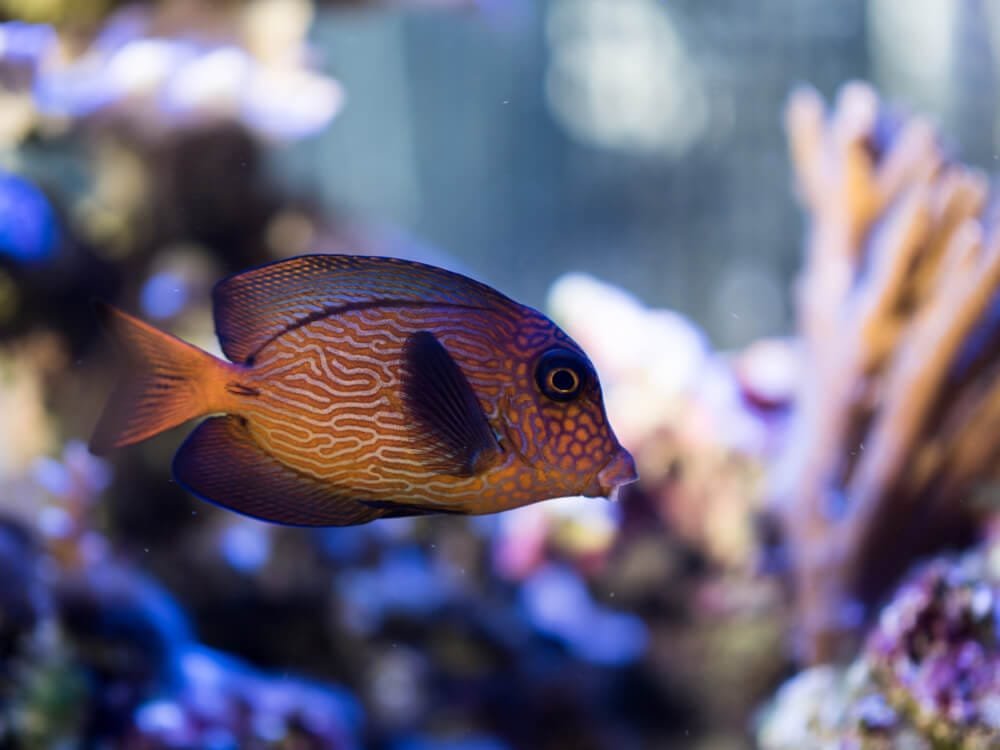Powder Brown Tang: Care Guide and Tank Setup
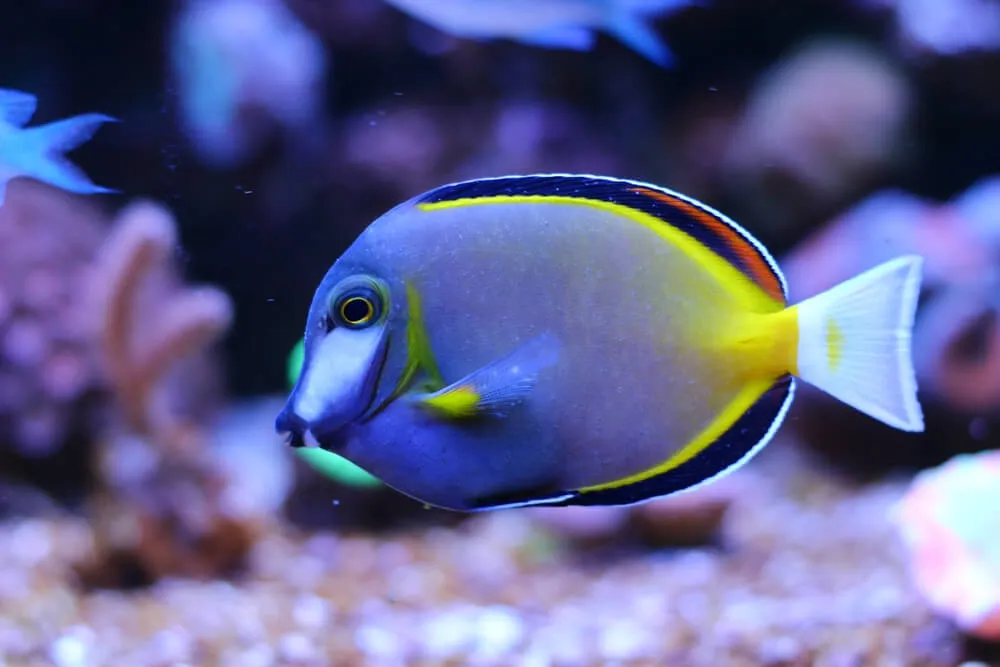
Imagine adding a touch of vibrant color and undeniable elegance to your saltwater aquarium. Look no further than the captivating Powder Brown Tang. With its stunning combination of rich browns and vivid oranges, this mesmerizing fish will effortlessly become the focal point of any tank. Its graceful movements and peaceful demeanor make it a desirable addition to any underwater paradise. Let’s explore the captivating world of the Powder Brown Tang and discover why it is a must-have for any serious aquarium enthusiast.
Physical Description
The Powder Brown Tang, also known as the White-faced Surgeonfish or the Powder Brown Surgeonfish, is a beautiful fish with a distinctive and eye-catching appearance. It can grow to a maximum size of about 8 inches, making it a medium-sized fish that can be a great addition to your aquarium. Its elongated body is laterally compressed, giving it a sleek and streamlined look.
In terms of coloration, the Powder Brown Tang is truly a sight to behold. Its body is predominantly brown, with a lighter shade on its ventral side and a darker shade on its dorsal side. It has a white face, bordered by a black stripe that extends from the snout to just behind the eye. The fins of the Powder Brown Tang are translucent and may have a yellow or orange hue, adding a pop of color to its overall appearance.
Habitat and Distribution
Natural Habitat
The Powder Brown Tang is commonly found in the Western Pacific Ocean, specifically in the waters surrounding Indonesia and the Philippines. It inhabits areas with coral reefs, lagoons, and rocky cliffs, where it can find shelter and ample food sources.
Distribution in the Wild
In the wild, the Powder Brown Tang has a widespread distribution within its natural range. It can be found in various locations throughout the Western Pacific, including the Great Barrier Reef in Australia, the Coral Triangle, and the waters surrounding the Maldives. It tends to prefer areas with clear, warm waters and high coral coverage.
Occurrence in Aquariums
The Powder Brown Tang is a popular choice among aquarium enthusiasts due to its striking appearance and vibrant personality. It is commonly kept in home aquariums, as well as public aquariums, where it can be showcased and admired by many. However, it is important to note that the Powder Brown Tang requires specific tank conditions and care to thrive in captivity.
Tank Requirements
Tank Size
When it comes to housing the Powder Brown Tang, it is important to provide enough space for it to swim and explore. A minimum tank size of 75 gallons is recommended for a single Powder Brown Tang. If you plan on keeping multiple fish, it is best to have a larger tank to accommodate their needs.
Water Parameters
Maintaining optimal water parameters is crucial for the health and well-being of the Powder Brown Tang. The ideal temperature range for this species is between 74 and 82 degrees Fahrenheit, with a pH level of 8.1 to 8.4. Additionally, it is important to provide a suitable salinity level of around 1.023 to 1.025 specific gravity.
Aquascape and Decor
To create a suitable environment for the Powder Brown Tang, it is recommended to set up a well-established marine aquarium with live rock and a sandy substrate. The live rock will not only provide hiding spots and areas for algae growth, but it will also help maintain stable water conditions by acting as a biological filter. Adding corals and other invertebrates can also enhance the aesthetic appeal of the tank and provide additional hiding places for the fish.
Feeding
Diet in the Wild
In its natural habitat, the Powder Brown Tang is primarily herbivorous, feeding on various species of algae and marine plant matter. It uses its small, protrusible mouth to graze on the surfaces of rocks and corals, scraping off the algae with its sharp teeth.
Feeding in Captivity
To ensure the Powder Brown Tang receives a balanced diet in captivity, it is essential to replicate its natural feeding habits as much as possible. Providing a varied diet consisting of high-quality pellet or flake food specifically formulated for herbivorous fish is a good starting point. Supplementing their diet with fresh or frozen vegetables like seaweed, spinach, and zucchini can also be beneficial. Feeding should occur multiple times a day to meet their nutritional needs.
Compatibility
Tankmates
When selecting tankmates for the Powder Brown Tang, it is important to choose species that are compatible with its temperament and size. Ideally, peaceful and non-aggressive fish would make good companions for the Powder Brown Tang. Some suitable tankmates include other tangs, dwarf angelfish, chromis, and certain wrasses. Care should be taken when introducing new fish to the tank to prevent aggression or territorial disputes.
Aggression and Social Behavior
The Powder Brown Tang is generally considered to be a peaceful fish, but it can exhibit territorial behavior, especially towards other tangs or similar species. Providing ample swimming space and visual barriers through the use of rocks and corals can help minimize aggression. It is worth noting that as the Powder Brown Tang matures, it may become more aggressive, especially towards new additions to the tank.
Reproduction and Breeding
Mating Behavior
The reproductive behavior of the Powder Brown Tang in captivity is still relatively unknown. In the wild, they engage in spawning events where a group of males and females release their gametes simultaneously. The fertilized eggs then float freely in the water column until they hatch into larvae.
Caring for Eggs and Fry
The Powder Brown Tang has not been bred successfully in captivity on a regular basis. However, if spawning occurs in a home aquarium, it is essential to remove the eggs from the main tank and transfer them to a separate rearing tank. The rearing tank should have appropriate water quality and temperature to facilitate successful hatching and the subsequent growth of the fry. Providing suitable food, such as copepods or finely crushed flake food, is crucial for the survival and development of the young fish.
Common Diseases
Ich
Ich, also known as white spot disease, is a common ailment that can affect the Powder Brown Tang. It is caused by a parasitic protozoan called Ichthyophthirius multifiliis. Symptoms of ich include the appearance of tiny white spots on the fish’s body and fins, as well as increased scratching and lethargy. Treating ich involves raising the temperature of the water and using an appropriate medication.
Velvet
Velvet, or Amyloodinium, is another common parasitic infection that can affect the Powder Brown Tang. Infected fish may display symptoms such as a dull appearance, excessive mucus production, and rubbing against objects in the tank. Treatment involves raising the water temperature and using medications specifically designed to target parasites like velvet.
Lateral Line Erosion
Lateral line erosion, also known as head and lateral line erosion (HLLE), is a condition that affects the sensory organs of fish, leading to the deterioration of the lateral line and the surrounding tissues. The exact cause of HLLE is not fully understood, but poor water quality, improper nutrition, and stress are believed to contribute to its development. Prevention involves maintaining optimal water quality, providing a balanced diet, and limiting stressors in the tank.
Maintenance and Care
Water Quality
To ensure the well-being of the Powder Brown Tang, it is vital to maintain optimal water quality. Regular testing of water parameters, including ammonia, nitrite, nitrate, and pH levels, should be conducted. Performing regular water changes, siphoning any debris or uneaten food from the substrate, and using a protein skimmer can help maintain a clean and stable environment for the fish.
Regular Maintenance
In addition to monitoring water quality, regular maintenance tasks should be performed to keep the aquarium in top condition. This includes cleaning the glass, maintaining the filtration system, and checking the functionality of equipment such as heaters and pumps. Removing any excess algae growth and ensuring adequate lighting is also important for the overall health of the tank.
Monitoring Health
Observing the behavior and appearance of the Powder Brown Tang on a regular basis is essential for early detection of any health issues. Signs of distress or illness may include loss of appetite, abnormal swimming patterns, rapid breathing, or changes in coloration. If any concerns arise, it is recommended to consult with a knowledgeable aquarium professional or veterinarian to ensure appropriate action is taken.
Conclusion
The Powder Brown Tang is a stunning fish that can be a fantastic addition to your aquarium. With its vibrant coloration and engaging personality, it is sure to captivate any observer. However, it is important to provide the proper care and attention to ensure its health and well-being. By maintaining optimal tank conditions, offering a varied and nutritious diet, and monitoring its behavior and appearance, you can enjoy the beauty of the Powder Brown Tang for years to come.
